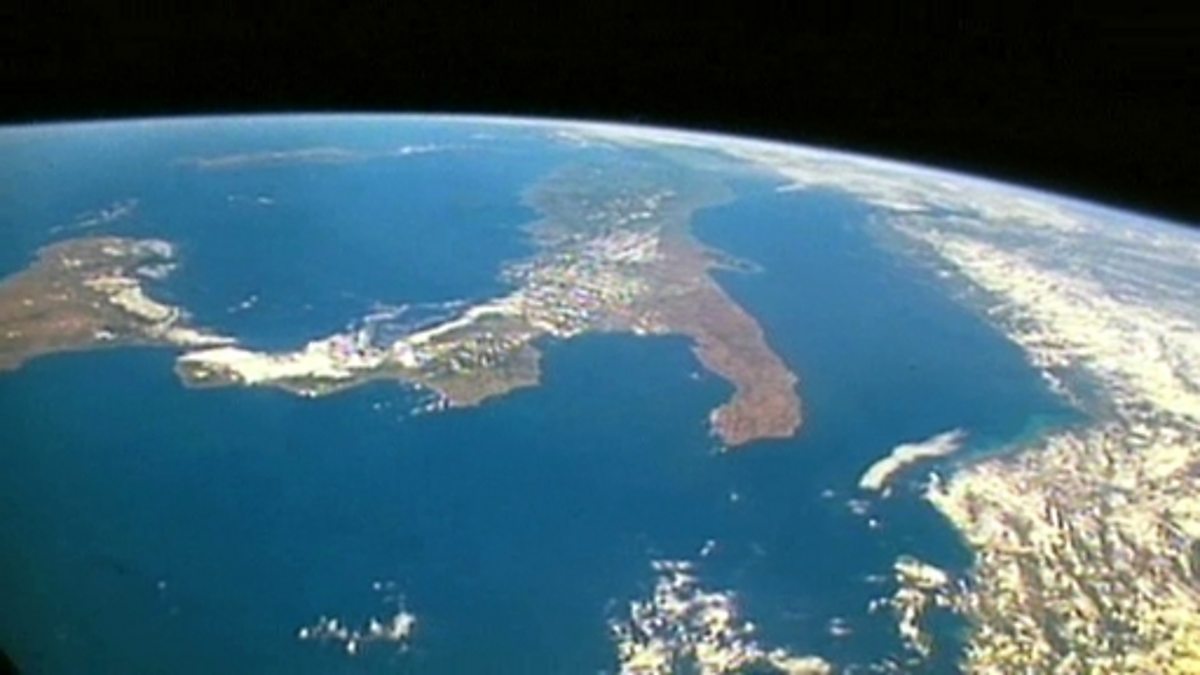Earth, space and the solar system

We know the Earth is round, like a ball.
But only 50 years ago, such pictures weren’t possible.
Two and a half thousand years ago, it was impossible to see beyond your immediate neighbourhood.
And if this was what you saw, what would you think?
It looks flat. It feels flat.
Most people just assumed the Earth was flat.
But in Ancient Greece, some people were asking questions, including the philosopher Aristotle.
He reasoned that the world was a sphere.
And he also had evidence.
What was this evidence?
At first sight, ships appear to just get smaller and smaller as they disappear into a hazy horizon.
But in the clearer Greek skies, Aristotle observed that the hull, the bottom, disappeared first.
He maintained that would only happen on a curved surface.
If the Earth was flat, we’d see the whole ship getting smaller and smaller until it becomes a tiny dot.
But on a curved Earth, when the ship reaches the horizon, the hull disappears first.
And there was further evidence in the night sky.
By this time people had discovered you saw different constellations as you moved north to south.
Again, Aristotle argued, that proved the Earth was round.
If you were standing on a flat Earth, looking at the night sky, then surely you’d see the same stars, on the same night,wherever you stood?
But not if the world is round.
And finally, he observed a shadow cast by the Earth on the Moon as it was eclipsed – it was curved, not straight.


